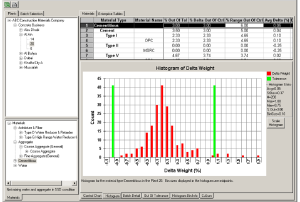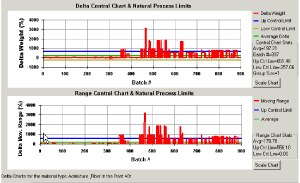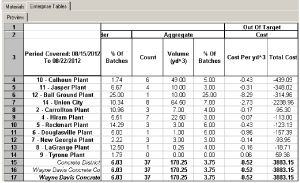QUADREL®
iBatch

The return part of the CLI loop that retrieves batch results from production in real-time. iBatch reconciles the (actual) batch ticket’s material weights and codes with the (target) Quadrel mix’s; calculates cost and quality variance; evaluates production tolerances per ASTM C94 requirements; and archives bill of materials (materials codes and weights).


